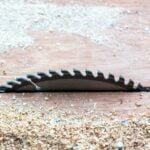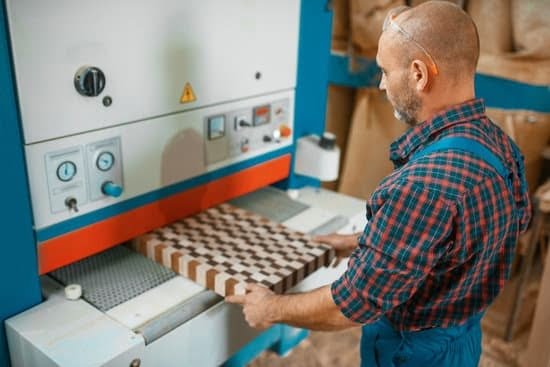Are you wondering how to remove latex paint from stained woodwork? It’s a common problem that many homeowners face, but it’s important to tackle it properly in order to maintain the beauty of your stained wood.
Latex paint can easily end up on stained woodwork during home improvement projects, and if not removed correctly, it can damage the wood and ruin its appearance. In this article, we will explore the best methods for removing latex paint from stained woodwork and provide helpful tips for a successful outcome.
Before diving into the specific techniques for removing latex paint from stained woodwork, it’s essential to understand the materials involved. Latex paint and stained woodwork have different properties, making it necessary to use specific tools and methods tailored to each material. By gaining knowledge about these differences, you’ll be better equipped to choose the most effective approach for removing the unwanted paint without causing harm to the underlying wood.
To successfully remove latex paint from stained woodwork, you’ll need a variety of tools and supplies. From heat guns and solvents to sandpaper and protective gear, having the right equipment at your disposal is crucial for achieving the desired results. In the following sections, we will provide a detailed list of all the necessary tools and supplies needed for this project, ensuring that you are fully prepared before getting started on removing the latex paint from your stained woodwork.
Understanding the Materials
Latex paint and stained woodwork are two very different materials, each requiring a unique approach when it comes to cleaning and removal. Understanding the properties of these materials is crucial in knowing how to effectively remove latex paint from stained woodwork without causing damage.
Latex Paint vs. Stained Woodwork
Latex paint is a water-based substance that forms a flexible and plastic-like film when it dries. On the other hand, stained woodwork consists of wood treated with a colored or clear stain to enhance its natural appearance while still allowing the grain of the wood to show through. These fundamental differences influence the way in which each material responds to cleaning and removal methods.
Why Certain Methods Work Better
Because latex paint creates a film on the surface of the wood rather than penetrating into it like stain, certain methods will work better for removing latex paint from stained woodwork. For example, because latex paint is more susceptible to heat than stain, using a heat gun or hair dryer can soften the latex paint, making it easier to scrape off without damaging the underlying stain.
In contrast, using chemical solvents may not be as effective since they are designed to break down and dissolve paint, which can also affect the underlying stain.
Understanding these differences is essential in choosing the right method for removing latex paint from stained woodwork safely and effectively. By taking into account the nature of both materials, homeowners and DIY enthusiasts can successfully restore their woodwork back to its original stained appearance without causing any further damage.
Tools and Supplies Needed
When it comes to removing latex paint from stained woodwork, having the right tools and supplies is crucial for a successful outcome. Here, we’ll provide a detailed list of the specific items you’ll need to effectively tackle this task.
Protective Gear
Before you begin, it’s important to prioritize your safety by wearing protective gear. This includes gloves to protect your hands from harsh chemicals and dust, safety goggles to shield your eyes, and a respirator mask to prevent inhalation of fumes or particles.
Heat Gun or Hair Dryer
One method for removing latex paint from stained woodwork involves the use of heat. In order to utilize this technique, you will need either a heat gun or a hair dryer. The heat will help soften the paint, making it easier to scrape off without damaging the wood underneath.
Chemical Paint Remover
Another effective way to remove latex paint is by using a chemical paint remover specifically designed for wood surfaces. Look for a product that is safe for stained woodwork and follow the manufacturer’s instructions carefully.
Sanding Equipment
For more stubborn areas of latex paint that are difficult to remove with heat or chemicals, having sanding equipment on hand is essential. This can include coarse sandpaper for initial removal of the paint, as well as finer grits for smoothing out the wood surface after the paint has been removed.
Protective Sheets and Tape
It’s important to protect surrounding areas during the paint removal process. Use drop cloths or plastic sheeting to cover floors and furniture, and use painter’s tape to secure these protective coverings in place.
By ensuring that you have all of these tools and supplies at your disposal, you’ll be well-equipped to successfully remove latex paint from stained woodwork without causing damage or undue frustration.
Preparing the Work Area
When it comes to removing latex paint from stained woodwork, proper preparation of the work area is essential to avoid any damage to surrounding surfaces and to ensure a successful removal process. Here are some important steps to take when preparing the work area:
- Tape off surrounding areas: Use painter’s tape to carefully cover any adjacent surfaces such as walls, baseboards, or trim that you want to protect from accidental paint removal. This will create a clean boundary and prevent the paint removal process from inadvertently spreading to unwanted areas.
- Protect floors and furniture: Lay down drop cloths or plastic sheeting to cover the floor in the vicinity of the woodwork being treated. This will prevent any paint chips, dust, or residue from falling onto floors or furniture and causing damage. Additionally, if furniture cannot be moved out of the area, make sure it is adequately covered and protected from any potential drips or spills during the removal process.
- Ventilation: Ensure that the work area is well-ventilated by opening windows and using fans to help dissipate fumes from any chemical solvents that may be used in the paint removal process.
Taking these precautions before starting the paint removal process will help create a safe and controlled environment for effectively removing latex paint from stained woodwork. By properly prepping the work area, you can minimize any potential mess or damage while also ensuring that the focus remains on successfully removing the unwanted latex paint without causing harm to surrounding surfaces.
Methods for Removing Latex Paint From Stained Woodwork
When it comes to removing latex paint from stained woodwork, there are several methods that can be used depending on the severity of the paint and the type of wood. One method is using heat to soften the latex paint so it can be easily scraped off.
This can be done with a heat gun or a hairdryer, but caution should be taken to avoid scorching the wood or causing it to catch fire. The heat causes the paint to soften and bubble, making it easier to remove with a putty knife or scraper.
Another method for removing latex paint from stained woodwork is using solvents such as mineral spirits or denatured alcohol. These solvents can dissolve the latex paint, allowing it to be wiped away with a cloth or scrubbed off with a brush. It’s important to test the solvent in an inconspicuous area first to ensure that it won’t damage the stained wood finish.
Sanding is also an effective method for removing latex paint from stained woodwork, especially for stubborn or thick layers of paint. Coarse sandpaper can be used initially to remove most of the paint, followed by finer grit sandpaper to smooth out the surface and prepare it for refinishing.
However, sanding should be done carefully to avoid damaging the stained wood underneath. These methods all require patience and attention to detail, but when done properly they can effectively remove latex paint from stained woodwork without causing damage.
Safety Precautions
When working to remove latex paint from stained woodwork, it’s crucial to prioritize safety to prevent any accidents or injuries. The process of removing paint often involves using chemicals, solvents, or heat, which can pose risks if not handled properly. Here are some important safety precautions to keep in mind when tackling this task.
First and foremost, it’s essential to wear the appropriate protective gear when working with chemicals and solvents. This includes wearing gloves to protect your skin from direct contact with the substances being used. Additionally, protective eyewear should be worn to shield your eyes from any splashes or fumes that may be released during the paint removal process.
In addition to protective gear, it’s important to ensure proper ventilation in the work area when using chemicals or solvents. This can help minimize exposure to harmful fumes and odors that may be emitted during the paint removal process. If possible, consider working in a well-ventilated space or using fans and open windows to create airflow.
When using heat-based methods for removing latex paint from woodwork, such as heat guns or infrared heaters, extra caution is necessary. These tools can reach high temperatures and pose a fire hazard if not used correctly. Always follow the manufacturer’s instructions for operating these devices and never leave them unattended while in use.
| Safety Precautions | Importance |
|---|---|
| Wearing Protective Gear | Protects skin and eyes from direct contact with chemicals/solvents |
| Ensuring Proper Ventilation | Minimizes exposure to harmful fumes/odors |
| Using Heat-Based Methods Safely | Follow manufacturer’s instructions; never leave unattended |
Cleaning and Finishing the Wood
After successfully removing the latex paint from stained woodwork, it’s important to clean and finish the wood properly to restore its original appearance. One of the first steps in this process is to thoroughly clean the wood to remove any residual paint, as well as any dirt or debris that may have accumulated during the paint removal process.
This can be done using a mild detergent and water, along with a soft cloth or sponge to gently scrub the surface.
Once the wood is clean and dry, it’s time to refinish it to restore its original stained appearance. Depending on the type of stain originally used on the woodwork, this may involve applying a fresh coat of stain to achieve a consistent color and finish. It’s important to carefully select a stain that matches the existing color as closely as possible for a seamless result.
After applying the new stain, allow it to dry completely before finishing with a protective topcoat. This can be a clear polyurethane, lacquer, or varnish designed for use on stained woodwork. The topcoat will not only protect the newly refinished surface but also enhance its appearance and provide a durable finish that will withstand everyday wear and tear.
Following these steps will help ensure that your stained woodwork looks like new after removing latex paint, allowing you to enjoy its natural beauty once again.
Don’t forget your eye protection gear when working with chemicals or heat during this process. Proper ventilation is also crucial when working with solvents or finishes in an enclosed area in order to prevent inhalation of toxic fumes. Additionally, wearing gloves will protect your skin from harsh chemicals during cleaning and finishing stages.
Preventing Future Paint Mishaps
In conclusion, removing latex paint from stained woodwork can be a daunting task, but with the right tools, techniques, and safety precautions, it is definitely achievable. Understanding the materials involved and preparing the work area are crucial steps in successfully removing the paint without damaging the wood underneath. Whether using heat, solvents, or sanding, following the outlined methods for removing latex paint from wood can help restore its original stained appearance.
Additionally, taking preventive measures to avoid future paint mishaps is essential. Using proper primers and sealants can help create a barrier between the wood and latex paint, preventing it from adhering in the first place. By following these guidelines and being proactive in maintenance and care of stained woodwork, you can keep your surfaces looking their best for years to come.
In summary, while it may require some time and effort to remove latex paint from stained woodwork, the results are well worth it. By knowing how to properly tackle this common issue and taking steps to prevent it from happening again in the future, you can maintain the beauty of your stained wood surfaces for years to come.
Frequently Asked Questions
How to Remove Latex Paint Without Removing the Varnish From Wood?
Removing latex paint from wood without removing the varnish can be done using a few different methods. One option is to use a mixture of water, dish soap, and rubbing alcohol to gently scrub away the paint with a soft cloth or sponge.
Another method involves using a heat gun and a putty knife to carefully scrape off the paint while being careful not to damage the varnish.
How Do You Remove Paint From Wood Without Damaging Wood?
When removing paint from wood without damaging it, it’s important to use gentle methods that won’t strip or scratch the wood. One effective way is to use a chemical paint stripper specifically designed for wood surfaces.
This can help soften the paint so it can be easily removed with a scraper or gentle sanding. Sanding by hand with fine-grit sandpaper can also be effective in removing paint without causing damage.
What Is the Best Product to Remove Latex Paint From Wood?
The best product for removing latex paint from wood will depend on the specific needs of the project. However, there are some popular options that are often recommended by professionals and DIY enthusiasts.
These include products like mineral spirits, denatured alcohol, or even commercial latex paint removers that are designed to safely and effectively remove paint from wood surfaces without causing damage or discoloration. It’s important to follow the instructions on these products carefully and test them in an inconspicuous area before applying them to larger areas of wood.

Hi everyone! I’m a woodworker and blogger, and this is my woodworking blog. In my blog, I share tips and tricks for woodworkers of all skill levels, as well as project ideas that you can try yourself.





